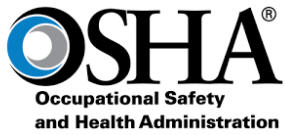What Healthcare Employees Need To Know About OSHA

By: Judah Gutwein, LNHA - Regency Nursing & Rehabilitation Centers, NJ
Let’s face it, the reality of life in the United States of America, is that most of us are forced to survive on a dual income (where “he works and she works”).
In fact, we work long hours to make ends meet and we are often involved in tedious and manual labor at the workplace. The truth of the matter is, even without backbreaking labor, during a typical workday at the office, you will encounter a myriad number of opportunities for personal injury.
While this is sometimes due to an act of haste or carelessness, it’s not always the case.
Sometimes, it is due to a workplace safety hazard which could have been avoided, but for the neglect and carelessness of the employer.
OSHA was formed to protect employees from sustaining work related injuries by requiring and mandating minimum safety standards.
What is “OSHA?”
OSHA stands for the Occupational Safety and Health Administration, an agency of the U.S. Department of Labor. The U.S. Congress, led by U.S. Senator Harrison A. Williams Jr. and U.S. Representative William A. Steiger, passed the Occupational Safety and Health Act of 1970 (the OSH Act)1 "...to assure so far as possible every working man and woman in the nation safe and healthful working conditions and to preserve our human resources." The legislation, signed into law by President Richard M. Nixon on Dec. 29, 1970, established OSHA and its sole responsibility to provide worker safety and health protection.
What Does OSHA do?
The primary purpose of work is to be able to make an honest living and support our families. The workplace is like one big community where folks gather together in good faith and collaboration to work towards the successful execution of the company objectives.
Proper safety and wellbeing at the workplace is invaluable in improving productivity, increasing morale and employee collaboration, decreasing employee attrition and turnover and increasing job satisfaction.
Protecting the safety of the worker is therefore not only a company responsibility, but it also makes sense from a business perspective, because it is the best way to decrease costs and increase revenues.
This (and so much more) is what OSHA is invested in/with.
Just think about it for a moment; when a worker stays healthy, the business will experience less turnover, more efficient operation and cost control, less workers compensation and insurance claims and greater employee satisfaction.
Why is OSHA essential?
Until 1970, no cohesive or robust provisions existed to protect against workplace safety and health hazards.
Instead, job related accidents were at astronomical highs and increasing every year, a few million workers were disabled by injuries that occurred at the workplace and untold numbers of work days were lost as a result of sick leave and injury related unemployment.
OSHA’S Accomplishments
OSHA uses three basic strategies, authorized by the Occupational Safety and Health Act, to help employers and employees reduce injuries, illnesses, and deaths on the job:
- Strong, fair, and effective enforcement;
- Outreach, education, and compliance assistance; and
- Partnerships and other cooperative programs.
In fact, OSHA.gov cites the following programs and activities to promote workplace safety and health:
- Encourages employers and employees to reduce workplace hazards and to implement new safety and health management systems or improve existing programs;
- Develops mandatory job safety and health standards and enforces them through worksite inspections, employer assistance, and, sometimes, by imposing citations, penalties, or both;
- Promotes safe and healthful work environments through cooperative programs, partnerships, and alliances;
- Establishes responsibilities and rights for employers and employees to achieve better safety and health conditions;
- Supports the development of innovative ways of dealing with workplace hazards;
- Maintains a reporting and recordkeeping system to monitor job-related injuries and illnesses;
- Establishes training programs to increase the competence of occupational safety and health personnel;
- Provides technical and compliance assistance and training and education to help employers reduce worker accidents and injuries;
- Works in partnership with states that operate their own occupational safety and health programs; and
- Supports the Consultation Service.
For more information, visit www.osha.gov








